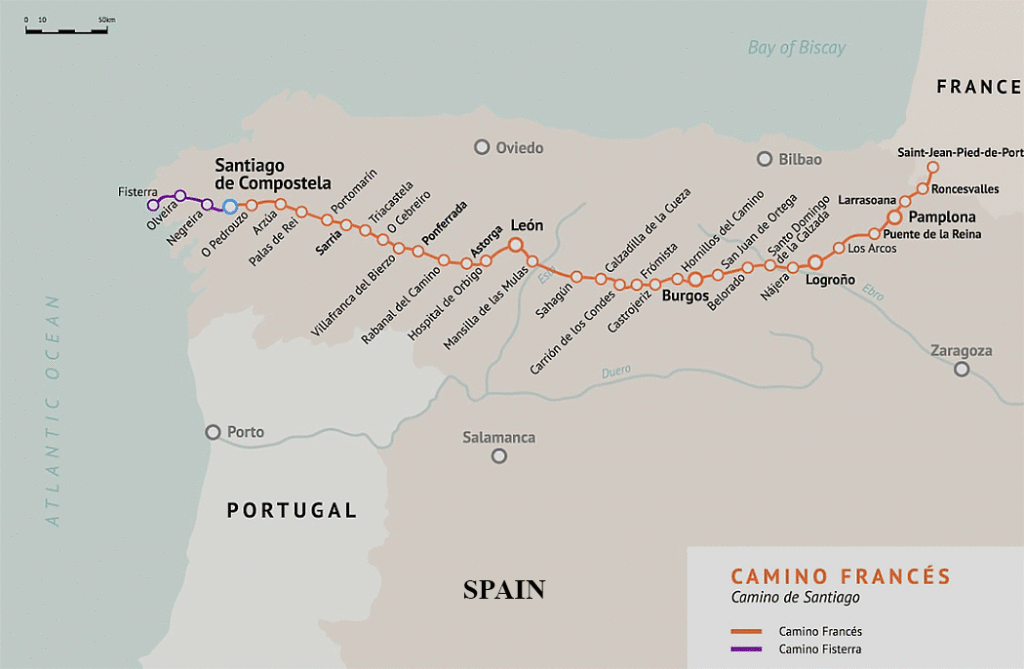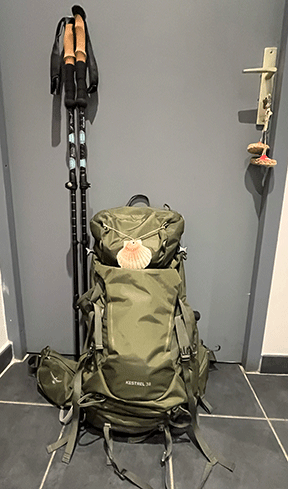The Camino de Santiago is having a moment.
This famed pilgrimage across Northern Spain to the cathedral city of Santiago de Compostela near the Galician coast dates back more than a thousand years, to those uncertain days when anxious believers braved bad weather, bandits and wolves to show their devotion to St James the Apostle, whose bones are reputedly buried there. These days the worst that is likely to befall what the Spanish call ‘peregrinos’ are sore feet, a bad internet connection and running of out of hot water at the communal hostels – or albergues – that are all part of the modern day pilgrim experience.

But let’s back up a little. The route from the south west tip of France to the end of the known world – Finisterre – had been known from Roman and pagan times. It’s position directly under the Milky Way prompted early stargazers to believe the route – or The Way, as Camino most directly translates to English – had special powers and was a meeting point of ancient ley lines connecting cosmic energy fields. The Romans built a road along what is now the Camino, but with the fall of empire the place became little more than a backwater until the ninth century, when a local farmer allegedly found some bones in a field directly under a gathering of stars. A local cleric ‘identified’ the bones as belonging to St James, the famous fisher-of-men apostle, and the place was named ‘Campos-Stella’ (field of stars). Pilgrims soon started to arrive. And they’ve been coming ever since.
By medieval times the Camino was considered one of Christendom’s Big Three pilgrimages, along with Jerusalem and Rome. Hostels, albergues and other refuges sprang up to house and feed them overnight. Local churches welcomed them, too. And less savory types sought to prey on them, prompting the Knights Templar, no less, to build a string of hilltop safehouses along the route to pro- vide safe haven.
Rebirth
But in later centuries the importance of the Church began to ebb, and by renaissance times the Camino had largely fallen into into disuse, becoming little traveled outside of orthodox Catholic circles right up into the 1970s.
But by the turn of this century, things had started to change. Well-known authors including Paulo Coelho and Shirley McLaine wrote best-sellers about the walking the Camino. Ageing Westerners, often those approaching retirement age and looking for meaning in their lives began to discover the Way. Guide books started to appear. Tour companies started to offer guided trips, long and
short, for various stages of the Camino. And then, in 2014 came the release of the movie The Way, in which Martin Sheen stars as a Californian dentist who embarks on the Camino as a tribute to his deceased son. Suddenly everyone was interested in taking that hike.

My interest certainly was piqued, but not sufficiently to commit. Research revealed that there are actually multiple caminos, starting in Portugal, France, Italy and elsewhere in Spain, for example. There is even a Camino Ingles, starting in England. But the ‘classic’ Camino starts on the French side of the Pyrenees and continues for about 500 miles to the city of Santiago. And for the really devoted, there’s another few days journey all the way to the Atlantic coast at Finisterre.
Calling to me
Upon delving a little deeper into the subject, I found that people I knew socially had done the Camino. Or family members of friends. One acquaintance of mine, I discovered, had actually written an e-book about it. I am one of the least religious people you will ever meet, but after these repeated signs of a connection to the Camino, I began to feel it was calling to me. And that feeling, I later learned, is very common among Camino first-timers. So I read some books, listened to some podcasts, joined some internet forums, until myself and my partner were ready to commit. We joined the Camino on September 15th and started walking. And we’re still going. A little footsore it’s true, but dutifully clocking 12-18 miles each day, hoping to reach Santiago towards the end of October.
Hopefully this will pique your interest, too, to come along for the ride.
